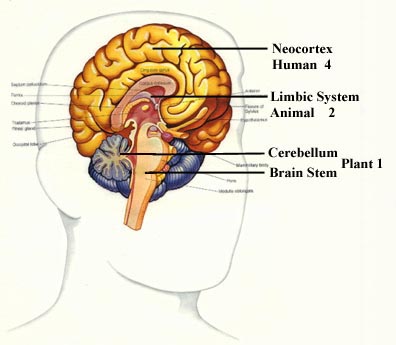Use It or Lose It, and Cells that Fire together Wire together
Everyone has heard of “Use It or Lose It.” Now…what is “It”?
Last week I gave a talk at the Italian Consulate in San Francisco, and one of the areas attendees seemed to enjoy the most was learning about what our brains are and how they work, peaking into the “black box” of our minds. Without understanding a few basics, how can we make good decisions about brain health?
At a quick glance:, the brain is composed of 3 “brains” or main sub-systems, each named after the evolutionary moment in which the sub-system is believed to have appeared.
A) Neocortex, or Human Brain, is the most recent area, where we perform high-level thinking and complex integrative tasks. Other mammals do have this part too, but in smaller proportion of the whole brain volume. This is where we have our right and left hemispheres.
B) Limbic System, or Mammalian Brain, critical for emotions and for memory,
C) Cerebellum and Stem, or Reptilian Brain, that regulates basic vital variables such as breathing, heartbeat and motor coordination
.
About the Limbic System
Emotions are generated here, as well as the appetites and urges that help us survive.
For instance, the amygdala gets triggered to prepare us to deal with a threatening situation, resulting in our feeling of fear.
The hippocampus is key in the formation of memory.
About the Neocortex
The Neocortex is composed of:
- Frontal Lobes: or the CEO of the Brain, for sophisticated brain functions such as planning and conceptualizing.
- Parietal lobes: Dealing with movement, the senses, and some forms of recognition
- Temporal lobes: Auditory processes and language
- Occipital: Visual processing center
Use it or lose it
When we exercise our brains, we put our neurons and connections between neurons in action.
“Cells that fire together wire together” means that synapses-unions between neurons- get solidified the more often the respective neurons “talk” to each other.
Given the diversity of functions outlined above, it is clear that different activities are going to activate different brain areas, which scientists now know thanks to neuroimaging techniques.
There is no one magic bullet that is best (either crosswords puzzles, or computer-based programs, or physical exercise): We do need a variety of mental stimulation or “brain exercises” to maintain the whole brain healthy.
———-
Read more about the brain and brain skills/cognitive abilities:



This is a informative site for brain related knowledge. Great job !
Wilson Teh
Glad you enjoy it, Wilson!